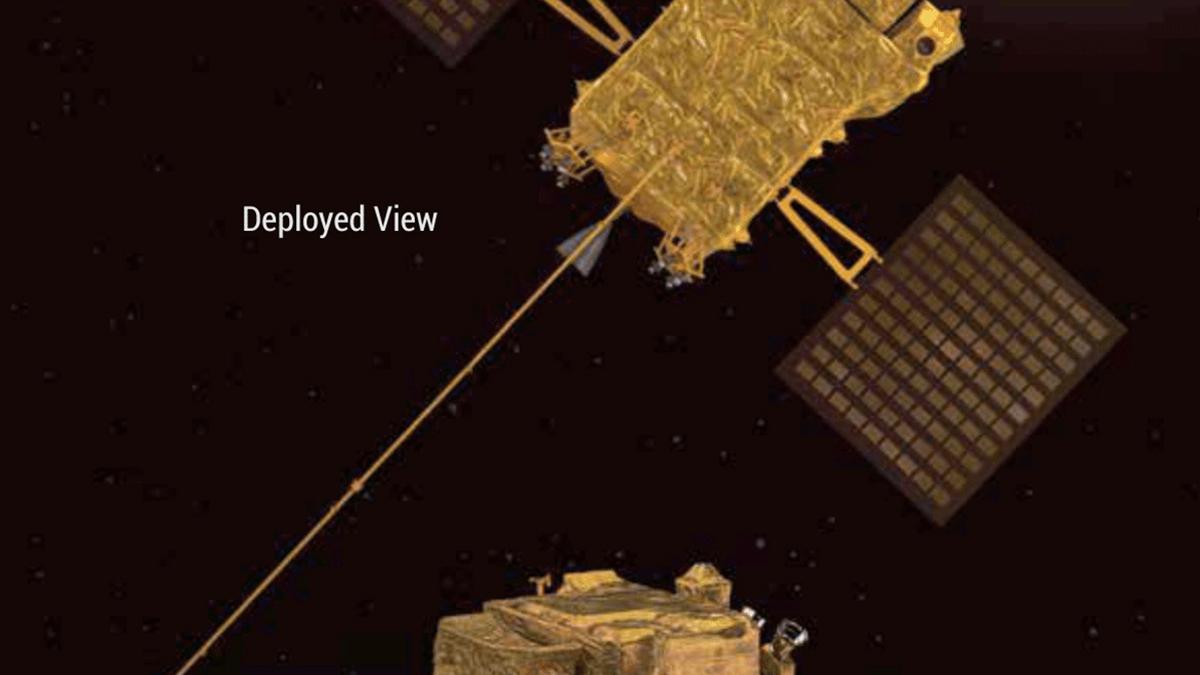
Aditya-L1 payload captures the first-ever image of a solar flare ‘kernel’
The Hindu
The Aditya-L1 mission was launched on September 2, 2023. On January 6, 2024, the spacecraft was successfully placed in a large halo orbit around first Earth-Sun Lagrange Point, known as Lagrange Point L1.
India’s first dedicated space based solar mission, Aditya-L1, has made a ground-breaking observation as one of its scientific payloads has captured the first-ever image of a solar flare ‘kernel’ in the lower solar atmosphere.
The Solar Ultraviolet Imaging Telescope (SUIT) payload has captured the image kernel in the lower solar atmosphere, namely the photosphere and the chromosphere.
ISRO said that this observation and associated scientific results mark a major step in understanding the Sun’s explosive activity and its impact on Earth.
According to ISRO: “On February 22, 2025, the SUIT payload onboard Aditya-L1 observed an X6.3-class solar flare, which is one of the most intense categories of solar eruptions. The unique feature of this observation was that SUIT detected brightening in the Near Ultra Violet (NUV) wavelength range (200-400 nm) —a wavelength range never observed before in such greater detail”.
The space agency added that these observations confirm that the energy released from the flare spread through different layers of the Sun’s atmosphere.
This provides new insights into the complex physics responsible for these massive solar explosions, according to the space agency.
One of the most exciting revelations in this observation is that the localised brightening captured in the lower solar atmosphere corresponds directly with an increase in the temperature of plasma in the solar corona at the top of the solar atmosphere.

Through the agency of the Federation of OMR Resident Associations, the IT Corridor now has an annual literary festival, a book reading club that is gaining in popularity by the day and regular book swap events. The IT crowd is clearly trying to honour the physical book in more ways than one. The greatest evidence of this trend is how an increasing number of gated communities on the Corridor are reserving space, time and resources for establishing a reading space. Based on their experiences, a primer on how to set up and sustain a community library












